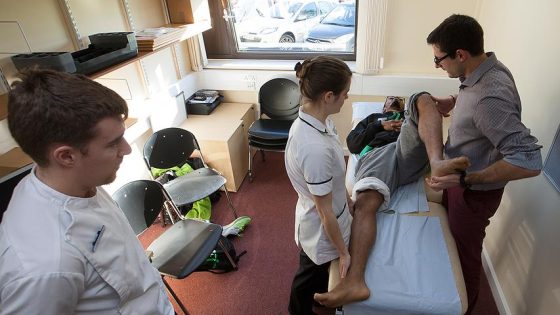Overview
What I wanted to attempt was to produce a podcast to help our medical students during their simulation sessions. This was a learning need that I had previously identified. I was prompted to produce this content as part of a PGCAP module; otherwise, there would have been a delay.
Even fifth-year students found simulation in the SIM Suite incredibly stressful. Their anxiety about participating and being observed was heightened by the stress of being in an unfamiliar environment and not feeling competent with how the equipment worked.
Before the scenario started at a session, students were orientated around the Sim Suite by a Clinical Skills Tutor. This would involve moving around the room and demonstrating how the equipment worked and where items were located. This was done to the whole group, so manoeuvring around the SIM Suite was difficult, and students may not have had a good view. Also, the time spent orientating the students ‘ate’ into the session time, so these orientations were brief, approximately five minutes. Also, specific procedures couldn’t be covered in the brief orientation.
What are the benefits of this new practice?
For the tutors, it means that, if accessed, the students are less stressed coming into the sessions as they are at least familiar with the layout, where the equipment is located and how some of the equipment works. The students are not as stressed and seem more relaxed at the start of the session – though not necessarily at the end, depending on how it has gone.
Students are ‘invited’ to view the Xerte Orientation Guide I compiled, which takes approximately 25 minutes. It allows them to orientate themselves in their own time and use the content for revision when needed later. I think this works much better as students can view the information at their own pace and review the technical parts when required. I feel that they will gain a greater understanding as they are not anxious when viewing the content and can focus on it. Also, this is much more detailed than the information they were given at the start of the session.
My colleagues think that this works well. Face-to-face orientation is still given but is more brief than previously, as it is assumed that the students have accessed the content.

What lessons have I learned?
I’ll never try to ‘speak and do’ again if I’m being filmed. I can’t do it! It’s much better to do and overdub; this reduces the number of takes required. Also, regarding the actual videoing – I don’t think panning in and out works well – It is better to have a close-up shot and then a distance one rather than a pan. I think this would look much more professional.

Feedback from students
The feedback has been incredibly positive. I have yet to have any negative feedback, not even regarding the time, which I realise is slightly longer than the 18 minutes I intended. I want to formalise this feedback soon and even feed this into some research!
My future plans
I have since completed another Xerte presentation on SDL Orientation and Etiquette for the students. I have discussed this tool with my colleagues, and they think it is great, but they have yet to try it themselves. My colleagues like the appearance of a Xerte presentation and have murmured about the possibility of doing something similar in the future.
In some sessions, I’ll construct another presentation with the video I will upload to YouTube. For some procedures, such as IV cannulation, I think this would be a fantastic revision tool for the students.
